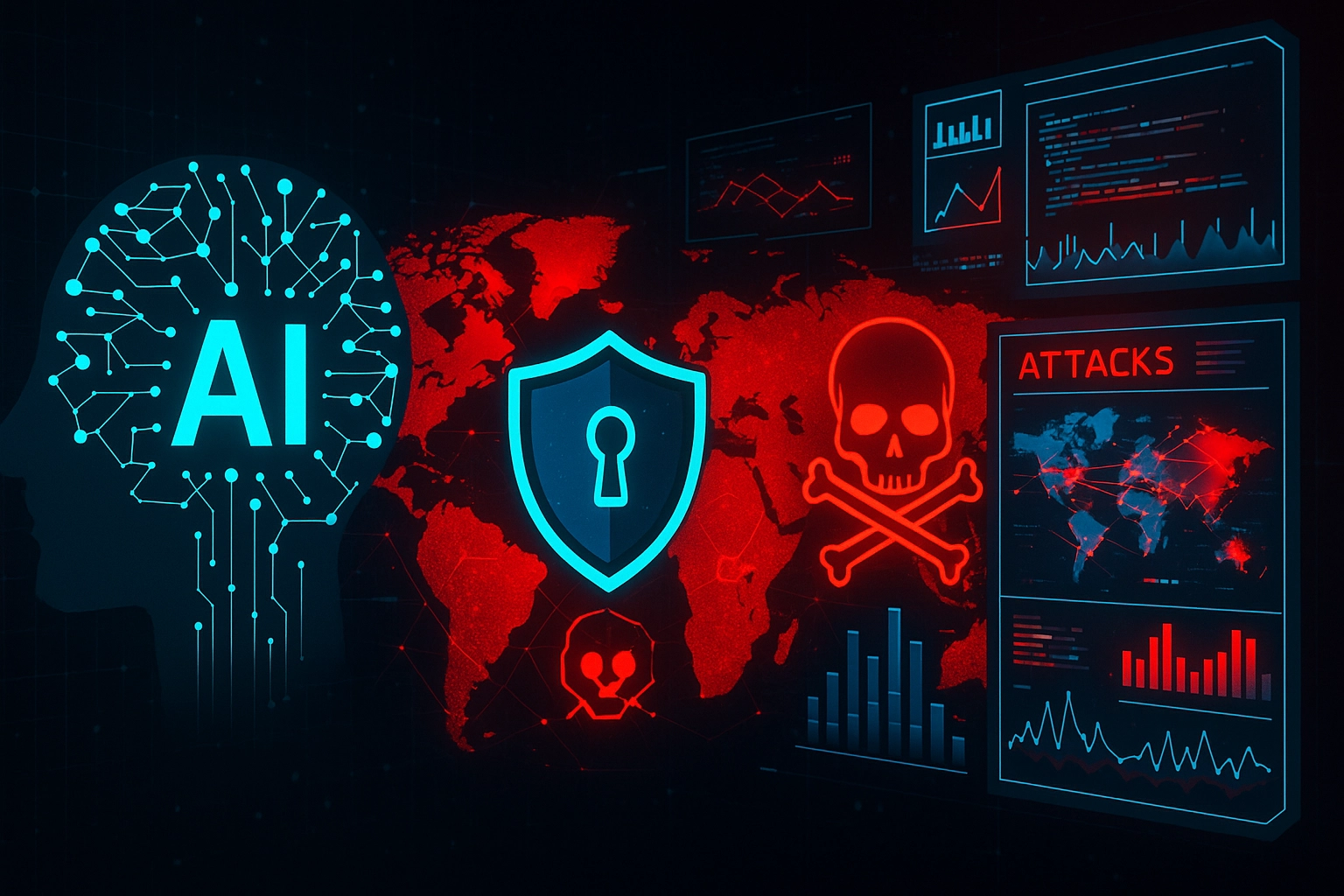
Artificial Intelligence is transforming cybersecurity — for both defenders and attackers.
While AI helps automate detection, protect cloud systems, and improve SOC operations…
it also supercharges cybercriminals, giving them tools to attack businesses faster and more intelligently than ever.
In 2025, AI-driven attacks have increased by 400% globally.
This blog post explains how AI-powered attacks work, real examples, and actionable steps to protect your business.
🤖 What Are AI-Powered Cyber Attacks? Link to heading
AI-powered cyber attacks use machine learning, automation, and large-scale language models to:
- Write malware
- Crack passwords
- Generate phishing messages
- Bypass firewalls
- Analyze exposed APIs
- Mimic human behavior
AI gives attackers speed, accuracy, and scalability.
⚠️ Top AI-Powered Cyber Attack Trends (2025) Link to heading
Below are the threats businesses face right now.
🔥 1. AI-Generated Phishing (99% Human-Like) Link to heading
Hackers now use LLMs to create:
- Personalized phishing emails
- Fake invoices
- Deepfake CEO messages
- WhatsApp scam chats
AI removes grammar mistakes, adds personalization, and increases the success rate drastically.
🧠 2. Machine Learning Malware Link to heading
Modern malware uses AI to:
- Change signatures (polymorphism)
- Evade antivirus
- Hide inside encrypted traffic
- Choose the best time to attack
This makes traditional detection almost impossible.
🛜 3. Automated Vulnerability Scanning Link to heading
AI bots scan millions of websites per hour looking for:
- Open ports
- Outdated CMS
- Broken APIs
- Exposed cloud buckets
- Weak credentials
If your system has a flaw → AI will find it instantly.
🎭 4. Deepfake Impersonation Attacks Link to heading
Cybercriminals use:
- Voice cloning
- Video deepfakes
- AI face models
These are used for:
- CEO fraud attacks
- WhatsApp money scams
- Social engineering
- Fake KYC bypass
💬 5. AI Chatbot Manipulation & Jailbreak Attacks Link to heading
Attackers manipulate AI systems to:
- Reveal sensitive data
- Execute harmful actions
- Bypass internal controls
These are called prompt injection attacks.
🌐 6. AI-Based Password Cracking Link to heading
Tools like PassGAN and ML-based brute force break:
- Weak passwords
- Dictionary-based logins
- Reused credentials
AI learns patterns → cracking becomes 10x faster.
🛡️ How to Defend Your Business (Simple & Effective) Link to heading
Below is a practical defense checklist for 2025.
🔐 1. Enforce Zero Trust Security Link to heading
Zero Trust = Always verify, never assume.
Use:
✔ MFA
✔ Device trust
✔ IP reputation checks
✔ Least privilege access
🧱 2. AI-Based Threat Detection (Use Defender Tools Too) Link to heading
Use tools like:
- Microsoft Defender XDR
- Cloudflare Security
- Wazuh + ML detection
- CrowdStrike Falcon
These work against AI bots.
🛑 3. Block Automated Attacks Link to heading
Enable:
✔ WAF
✔ CAPTCHA
✔ Bot detection
✔ Rate limiting
Essential for:
- Login pages
- APIs
- Contact forms
- Admin panels
🔎 4. Monitor Your Attack Surface Link to heading
Run:
- Weekly vulnerability scans
- API audits
- Cloud storage checks
Tools:
- Nessus
- Nuclei
- OWASP ZAP
💼 5. Employee Training Link to heading
Your team must learn:
✔ AI phishing red flags
✔ Deepfake awareness
✔ Secure authentication
✔ Safe password practices
✔️ Final Thoughts Link to heading
AI attacks are becoming more advanced each month — but with proper security controls, businesses can stay ahead.
If you need help with:
- AI threat protection
- Secure cloud configuration
- API hardening
- Cybersecurity consulting
I’m here to assist.
Written by Shayan Anique Akhtar — IT Consultant & Cybersecurity Specialist